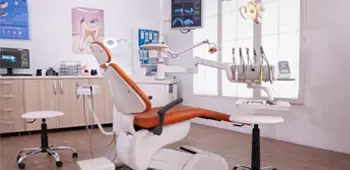The Role of Hygiene in Combating Antibiotic Resistance
Why is this an urgent issue?
Antibiotic resistance (AMR — Antimicrobial Resistance) is one of the most serious global health threats facing modern medicine. The emergence and spread of new resistant bacterial strains can make even simple infections difficult or impossible to treat. Reducing antibiotic use and ensuring prudent use (stewardship) are, of course, very important; however, hygiene is also a fundamental, concrete and immediately applicable part of this fight. This is because one of the most effective ways to prevent the spread of antibiotic resistance is to “prevent infection from occurring and spreading” — and this is where hygiene plays a critical role.
The pathways of antibiotic resistance spread — what does hygiene prevent?
Resistance spreads in two main ways:
- Clonal spread: Resistant bacteria spread directly from one person to another or via environmental surfaces.
- Gene transfer: Resistance genes can pass between different species via mobile genetic elements such as plasmids; the transfer of these genes is also accelerated by contaminated surfaces, water systems, equipment or human contact.
Hygiene—hand washing, surface disinfection, instrument/device disinfection, safe water and waste management—reduces both clonal spread and gene transfer.
How can resistance be reduced through hygiene in healthcare settings?
1. Hand hygiene — the first line of defence
Healthcare workers’ hands are one of the most important vectors for the transmission of resistant bacteria from patient to patient. The WHO’s “5 Moments for Hand Hygiene” approach should be implemented; alcohol-based hand antiseptics should be widely available and their correct use (amount, rubbing time) should be taught. Formulas containing moisturisers should be preferred to protect skin integrity; otherwise, cracked skin facilitates colonisation.
2. Surface and equipment disinfection
Regular and appropriate disinfection of frequently touched surfaces (monitors, bed rails, device panels) in critical areas such as intensive care, surgical units, and patient rooms breaks the chain of infection. The active ingredient of the disinfectant should be selected with attention to the appropriate concentration and contact time; instructions should be followed. Products effective against pathogens associated with antibiotic resistance should be preferred.
3. Instrument and invasive device maintenance
Invasive devices such as catheters, ventilator circuits, and endoscopes can facilitate biofilm formation; biofilm reduces both resistance development and antibiotic efficacy. Proper decontamination, cleaning, high-level disinfection, and appropriate storage (e.g., endoscope drying and storage cabinets) reduce the risk of biofilm.
4. Isolation and patient flow management
Early detection of patients carrying resistant organisms and the application of appropriate isolation measures are effective in preventing outbreaks. This requires both rapid intervention by the infection control team and staff training.
The importance of hygiene in the community and environment
Areas outside healthcare facilities also play a role in the spread of AMR: homes, schools, livestock, the food chain, and water systems. Practical measures:
- Hand hygiene should be promoted in schools and public transport hubs.
- Food safety: Inadequate cooking or cross-contamination supports the spread of resistant enteric bacteria.
- Wastewater management: Antibiotics and resistance genes from hospitals and agriculture can enter environmental waters; water treatment and disinfection are important.
- Animal health and agriculture: Uncontrolled use of antibiotics in veterinary medicine increases the pool of resistance; a One Health approach is needed to protect humans, animals and the environment in a coordinated manner.
Education, monitoring, and policy
- Continuous education: All healthcare personnel should receive regular training on hygiene protocols, hand hygiene, and equipment maintenance.
- Monitoring and reporting: Infection control indicators, hand hygiene compliance, and hospital infection rates should be measured regularly; improvement cycles should be implemented using the data.
- Regulations and guidelines: National guidelines (e.g. Turkish Ministry of Health, WHO, CDC recommendations) should be implemented in a consistent manner; biocide product licences and label information should be monitored.
Practical recommendations (both institutional and individual level)
- Alcohol-based hand antiseptics should be readily available at all points in healthcare facilities.
- Document surface disinfection protocols; establish a list of contact surfaces and their cleaning frequency.
- Monitor endoscope, ventilator, and catheter maintenance procedures according to current guidelines.
- Strengthen wastewater and medical waste management; minimise environmental discharges.
- Organise handwashing campaigns in the community and hygiene training in schools.
- Monitor antibiotic prescribing; develop clinical algorithms to prevent unnecessary prescriptions.
Measurable success
The effectiveness of hygiene practices in combating antibiotic resistance is measurable: infection rates, incidence of resistant strains, antibiotic consumption data and hand hygiene compliance rates should be reported regularly to optimise strategies.
Why is investing in hygiene worthwhile?
Combating antibiotic resistance is an expensive and long-term process; developing new antibiotics is difficult and costly. In contrast, hygiene measures are relatively low-cost, quickly implementable interventions with a directly felt impact. Each correct handwashing, proper disinfection step, and appropriate device maintenance can stop the spread of a resistant strain. Therefore, hygiene is both the first line of defence and the key to sustainable success in the fight against AMR.






















